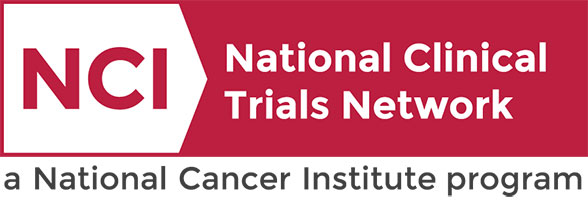P-CD19CD20-ALLO1 Allogeneic CAR-T Cells in the Treatment of Subjects With B Cell Malignancies
Lymphoma
Lymphoma
Phase 1 study comprised of open-label, dose escalation and expansion cohort study of P-CD19CD20-ALLO1 allogeneic T stem cell memory (Tscm) CAR-T cells in subjects with relapsed/refractory B cell malignancies
Lymphoma
I
Dholaria, Bhagirathbhai
NCT06014762
VICC-DTCTT23163P
Dose Optimization and Expansion Study of DFV890 in Adult Patients With Myeloid Diseases
Hematologic
Hematologic
Study CDFV890G12101 is an open-label, phase 1b, multicenter study with a randomized two-dose optimization part, and a dose expansion part consisting of three groups evaluating DFV890 in patients with myeloid diseases. The purpose of this study is to assess the safety, tolerability, pharmacokinetics, pharmacodynamics, efficacy and recommended dose for single agent DFV890 in patients with lower risk (LR: very low, low or intermediate risk) myelodysplastic syndromes (LR MDS), lower risk chronic myelomonocytic leukemia (LR CMML) and High-Risk Clonal Cytopenia of Undetermined Significance (HR CCUS).
Hematologic
I
Kishtagari, Ashwin
NCT05552469
VICC-DTHEM23007P
Testing the Effectiveness of Two Immunotherapy Drugs (Nivolumab and Ipilimumab) With One Anti-cancer Targeted Drug (Cabozantinib) for Rare Genitourinary Tumors
Multiple Cancer Types
This phase II trial studies how well cabozantinib works in combination with nivolumab and ipilimumab in treating patients with rare genitourinary (GU) tumors that has spread from where it first started (primary site) to other places in the body. Cabozantinib may stop the growth of tumor cells by blocking some of the enzymes needed for cell growth. Immunotherapy with monoclonal antibodies, such as nivolumab and ipilimumab, may help the body's immune system attack the cancer, and may interfere with the ability of tumor cells to grow and spread. Giving cabozantinib, nivolumab, and ipilimumab may work better in treating patients with genitourinary tumors that have no treatment options compared to giving cabozantinib, nivolumab, or ipilimumab alone.
Bladder,
Kidney (Renal Cell),
Rectal
II
Tan, Alan
NCT03866382
ALLIANCEUROA031702
A Study to Evaluate the Safety, Tolerability of INCB160058 in Participants With Myeloproliferative Neoplasms
This study is being conducted to assess the Safety, Tolerability, and Pharmacokinetics of INCB160058 in Participants With Myeloproliferative Neoplasms.
Not Available
I
Kishtagari, Ashwin
NCT06313593
VICC-DTHEM24055P
Phase 1 Study of INBRX-109 in Subjects with Locally Advanced or Metastatic Solid Tumors Including Sarcomas
Multiple Cancer Types
This is a first-in-human, open-label, non-randomized, three-part phase 1 trial of INBRX-109, which is a recombinant humanized tetravalent antibody targeting the human death receptor 5 (DR5).
Miscellaneous,
Phase I
I
Davis, Elizabeth
NCT03715933
VICCMDP2287
Expanded Access Protocol Using 131I-MIBG
Multiple Cancer Types
Protocol JDI2007-01 is an Expanded Access Protocol with therapeutic 131I-MIBG for patients with neuroblastoma or pheochromocytoma / paraganglioma, who otherwise do not qualify for available treatments, or where approved treatment is not commercially available.
Neuroblastoma (Pediatrics),
Pediatric Solid Tumors
N/A
Kitko, Carrie
NCT01590680
VICCPED1249
Study of Tinengotinib VS. Physician's Choice a Treatment of Subjects With FGFR-altered in Cholangiocarcinoma
Liver
Liver
This study is a Phase III, Randomized, Controlled, Global Multicenter Study to Evaluate the Efficacy and Safety of Oral Tinengotinib versus Physician's Choice in Subjects with Fibroblast Growth Factor Receptor (FGFR)-altered, Chemotherapy- and FGFR Inhibitor-Refractory/Relapsed Cholangiocarcinoma
Liver
III
Heumann, Thatcher
NCT05948475
VICC-DTGIT23271
Eltanexor and Venetoclax in Relapsed or Refractory Myelodysplastic Syndrome and Acute Myeloid Leukemia
Multiple Cancer Types
This phase I trial tests the safety, side effects, and best dose of eltanexor in combination with venetoclax for the treatment of patients with myelodysplastic syndrome (MDS) or acute myeloid leukemia (AML) that has come back after a period of improvement (relapsed) or that has not responded to previous treatment (refractory). Eltanexor works by trapping "tumor suppressing proteins" within the cell, thus causing the cancer cells to die or stop growing. Venetoclax is in a class of medications called B-cell lymphoma-2 (BCL-2) inhibitors. It may stop the growth of cancer cells by blocking Bcl-2, a protein needed for cancer cell survival. Giving eltanexor together with venetoclax may be safe, tolerable and/or effective in treating patients with relapsed or refractory MDS or AML.
Leukemia,
Myelodysplastic Syndrome,
Phase I
I
Ball, Somedeb
NCT06399640
VICC-VCHEM23008P
Nilotinib Plus Dabrafenib/Trametinib or Encorafenib/Binimetinib in Metastatic Melanoma
Multiple Cancer Types
This is a phase 1 dose-escalation study of nilotinib in combination with fixed-dose dabrafenib and trametinib regimen for patients with metastatic or unresectable melanoma carrying a BRAF V600 mutation and have relapsed on a BRAF/MEK inhibitor therapy. The goal is to assess the toxicity and tolerability and determine the maximum tolerated dose (MTD)/recommended phase 2 dose (RP2D) of the combination of nilotinib with dabrafenib and trametinib or with encorafenib and binimetinib. Additionally, this study will assess pharmacokinetic parameters of dabrafenib and nilotinib when used in combination.
Melanoma,
Phase I
I
Johnson, Douglas
NCT04903119
VICCMELP2274
Study to Compare Axicabtagene Ciloleucel With Standard of Care Therapy as First-line Treatment in Participants With High-risk Large B-cell Lymphoma
Lymphoma
Lymphoma
The goal of this clinical study is to compare the study drug, axicabtagene ciloleucel, versus standard of care (SOC) in first-line therapy in participants with high-risk large B-cell lymphoma.
Lymphoma
III
Jallouk, Andrew
NCT05605899
VICCCTT2298


